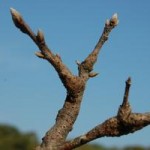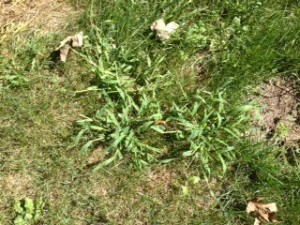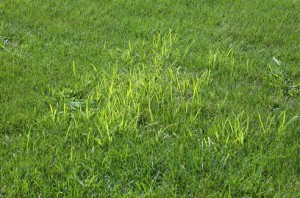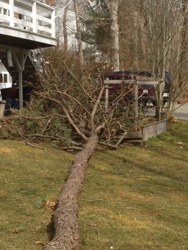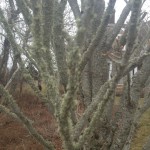
How can you not like the look of lichens?
Do you like lichens?
We recently received a phone call from a customer that her tree was being invaded by some wild fuzzy creatures. She said, My tree looks like it is from outerspace with hairy green appendages all over it.’ What was growing on her trees were lichen. Lichen, are an unusual pair. Yes, pair. One part fungus one part algae the two live in harmony, each doing a job to keep the organism alive. The alga, a microscopic green plant, makes food for the pair while the fungus, a non green plant supports and provides moisture. Lichen do not harm trees. They are squatters, hanging onto the branches and trunks of trees for support. Lichen are good indicators of air quality. They can withstand extreme heat and cold but perish in polluted conditions. They also work as air filters. Like other green plants, they use carbon dioxide for photosynthesis. Beside being air purifiers, lichen are used for a number of other purposes such as dyes, medicine and food. They are also sold for decorative purposes. For $12 you can buy a bag of them at Pottery Barn and use them as a vase filler. Or save yourself the $12 and pick them yourself. There seems to be an abundance of them all over Cape Cod and the South Shore.
Remember, healthy trees make for healthy air. If you have trees or shrubs that you would like to preserve the health and longevity of, call your Greenskeeper for a free consultation.
One of the biggest problem weeds we are seeing is the Crabgrass Imposter, Paspalum. Paspalum, as you can see from the picture looks very much like Crabgrass but does not react the same as crabgrass when treated. There is no pre-emergent for Paspalum. As our customer’s know, The Greenskeeper does 2 applications of pre-emergent crabgrass control. We found several years ago under certain conditions, (like the sporadic yet very heavy rains) the barrier that pre-emergents form can be washed away. A second application assures that the barrier is in place through the entire summer. Paspalum, because it proliferates by both seeds and short rhizomes can not be controlled by a pre-emergent. The difficulty in eradicating this weed is that products used to treat these weeds should not be applied when a lawn is experiencing heat or drought stress as it can damage turf grass. And you guessed it, Paspalum thrives in those conditions.
The next weed we are seeing a great deal of again is Nutsedge. Like Paspalum, Nutsedge is a rhizome. While it does come up in established lawns, we
often see it in newer lawns or lawns where new loam has been brought in. Suddenly, it takes off like wildfire and the entire neighborhood is infected. Nutsedge does not respond to broadleaf weed control and a special product has to be used on this invasive weed. Like the products used to treat Paspalum, it is best to treat Nutsedge when lawns are healthy and not experiencing drought or heat stress. While there is no way to prevent weeds from infiltrating your yard, your Greenskeeper can not only treat weeds but improve the health of you lawn. A healthy lawn will rebound and fill in faster after a problematic season of weeds.
]]>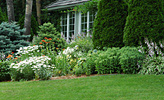 Are You Ready For Spring Lawn Care?
Are You Ready For Spring Lawn Care?
Your Greenskeeper is! If the emails and phone calls we are getting are any indication so are our customers. Here are a handful of tips that will help you and your lawn get off to a great start.
Rake: Spring raking should not be a work out. If you rake too hard, you run the risk of pulling up dormant grass by the roots. The goal here is to remove debris and lightly fluff your grass so that air can adequately circulate.
Clean Up: Pick up sticks, pinecones, stones and anything else that can dull your mower blade or become a projectile when mowing.
Get your motor running: An annual spring tune up is the best way to improve mower longevity and performance. It’s as simple as changing the oil, replacing the spark plug and cleaning or replacing the air filter. If you didn’t do it in the fall, remove the old gas from the gas tank. Check your mower blades and if necessary have them sharpened. Dull blades tear and shred grass making it susceptible to disease. Finally, clean the deck of your mower. Not a do it yourselfer? Be sure to get your mower in for its annual tune up early so your mower is ready when you are.
Call the Greenskeeper Lawn, Tree & Shrub: Spring is the time for fertilizing and crabgrass preventative. Applied through mid May, this first round of treatment has all the right nutrients your lawn needs to get a jump start on the growing season. If you are already a customer, just sit tight, we will be there! Not yet a Greenskeeper customer? Sign up for a free lawn analysis and estimate on our home page. There is no obligation and you might decide that you too deserve a Greenskeeper!
]]>Trees are not only an important part of the beauty of our landscape but they are vital to our ecosystem. They provide oxygen for all living things and a habitat for animals. Some produce fruit or nuts which are important food sources for both humans and animals. But what happens when the tree itself becomes the food source? Without proper treatment, pests can severely compromise the vitality of trees. Pests that might not kill a tree can weaken it enough that secondary pathogens will. These threats can also spread to and infect healthy trees. It’s an ongoing cycle. Property damage and personal injury are a risk as compromised trees are more susceptible to dropping limbs or being blown over or uprooted by adverse weather. Three pests of immediate concern for trees in our region are Winter Moth Caterpillar, Hemlock Wooly Adelgid and The Turpentine Beetle.
Winter Moth Caterpillar: It starts with moths in flight in late fall and early winter. In early spring, your car is covered with pin head sized pellets, the air smells like a litter box and when you walk through your yard, it’s like walking through cob webs. Then you see the culprit, that all too familiar nasty green inchworm. Like many invasive species the Winter Moth is not native to the US. Its origins can be traced back to Europe, where due to numerous natural predators and parasites, its affects were never as devastating as they have been in the northeast United States. After multiple years of attacks from not only winter moth but forest tent caterpillars and gypsy moth in the mid 2000’s, excessive defoliation is taking its toll and many deciduous trees (primarily oak) are showing signs of serious decline. Many trees have died in southeastern Massachusettsover the last 3 years from the stress of this defoliation coupled with drought and other factors. Multiple years of defoliation weakens trees to the point where secondary agents, also known as “weak invaders” can overcome what is left of a tree’s natural defenses, killing the tree. Scientists are experiencing great success in controlling the population, through the use of a natural predator Cyzenis Albicans but Winter Moth persists and scientists are predicting severe defoliation in pockets in pockets in 2012. To combat winter moth early spring horticultural oil is an excellent practice. By coating egg masses before they hatch, population is decreased. A follow up treatment to control populations that did hatch or migrated via wind and rain is suggested a short time later.
Hemlock Wooly Adelgid: This sucking insect was first identified in Massachusettslandscapes in 1988 having spread from an already existing infestation in Connecticut. Wooly Adelgid feeds on the hemlock by sucking sap from the twigs of the host plant. Already compromised trees die within 3 to 5 years of infestation. Healthy trees can live longer. This insect is atypical as it is very active through the winter and fairly inactive during the growing season. The pest is easily identified in its adult stage as it resembles cottonballs on the underside of hemlock needles. Without treatment, mortality is certain.
Black Turpentine Beetle: This pest is one of the most common and serious threats to Japanese Black Pine and Pitch Pine in coastal areas of the Northeast. Pitch pines, which are known for being very tolerant of salt spray and harsh conditions, are being especially hard hit on Cape Cod. Weakened trees emit a pheromone that attracts bark beetles. The beetles chew through the trunk of the already weakened plant to the vascular area, making the pitch flow out. Once that pitch hardens, the beetles re enter and once again, pitch flows out forming a pitch tube. This continues until the all the resin is drained from the tree. The beetles generally colonize trees in the first 8 feet of the trunk so the tell tale holes and pitch tubes are easily identified and something homeowners should be scouting for. It is important for homeowners to removed dead or diseased trees from their property to be less attractive to these invasive beetles and avoid the hazards of falling trees and limbs.
The Greenskeeper Lawn, Tree & Shrub can identify and treat for insects and diseases that are a threat to the health of your trees. Treatment is more environmentally friendly and less costly than removal and replacement of dead and diseased trees. If you think you might have damage from any of these insects or are concerned about the health of your trees, call The Greenskeeper Lawn, Tree & Shrub Service. Our knowledgeable staff will identify pests and present a plan that will have you enjoying your great outdoors for years to come.
]]>